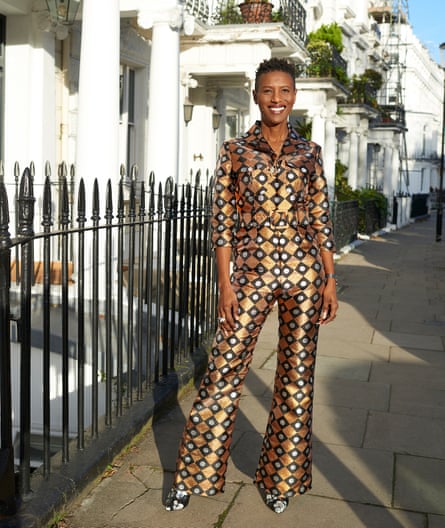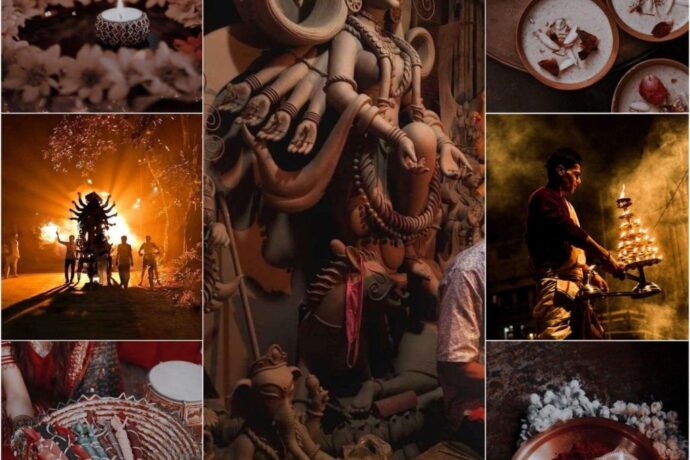‘Our designs are very uplifting’
Marielle Wyse of Wyse London
Multicoloured striped tank tops, pink scalloped dungarees, rainbow wrist heaters… If vibrant and daring color is what you’re wanting for, Marielle Wyse is your girl and Wyse London your model.
A former TV producer and a mom of two, she based Wyse in 2014 with simply 5 knitted jumpers to promote. Now she has a complete assortment of prepared-to-put on outfits and a ream of well-known and classy followers – you may need seen Zoë Ball sporting one among her dazzling knits on the BBC present It Takes Two. “I grew slowly and very leanly,” Marielle says. “I didn’t spend more than what was necessary. And I drove my poor family mad because I did everything at home. I had people coming to work in our house every day.”
Her love of color has solely elevated as she’s received older. “My father used to wear a lot of colour and I used to think, why aren’t you in navy or grey? But now I understand. If I wear a grey jumper I just feel flat. I don’t know if it’s an age thing, but I find myself so attracted to colour. Our stripy cardigans are very lifting pieces because life is pretty tough right now.”
During the course of this 12 months, which has seen so many vogue manufacturers battle and fail, Marielle has fully modified her enterprise technique. As wholesalers cancelled orders, she took to Instagram Live to speak to followers and prospects instantly about her design course of. “I would literally hold something up and see if people liked it,” she says. “If people said, ‘We love it,’ we’d get them to pre-order and we’d make it. It’s almost like a community design project. They say they want the sleeves to look a certain way and that’s what we do. It’s made me much better at my job because they’ve told me the bits they’re unhappy with.”
Although she readily admits to some “clangers”, equivalent to Wyse’s occasion season sequins, which individuals haven’t actually gone in for this 12 months, she’s additionally loved some large hits, together with her velvet attire and scalloped dungarees. “I had famous people asking me for them, to wear on TV,” she says. “But they were all sold out!”
wyselondon.co.uk; @wyselondon
“I would like colors to swimsuit everybody’
Rene Macdonald of Lisou London
‘People react to you differently when you wear colour’: Rene Macdonald of Lisou London. Photograph: Suki Dhanda/The Observer
“There’s this principle that in the event you put on color on a Monday, you might be extra productive in your work than in the event you put on black,” says Rene Macdonald, the founder and designer behind Lisou London. “People apparently react to you differently when you wear colour.”
That is nice information for the purchasers of Lisou, whose skirts, shirting, tailoring and attire come vibrant, printed and glossy, and sure to impress a optimistic response.
Rene, a former educational and stylist (“The serious and the ta-daa”, as she places it), based the model in 2018 with a silk shirt – the Betty, nonetheless a finest vendor – that delivered to London among the boldness of her Tanzanian heritage. “I know my love of colour comes from Africa,” she says. “There is literally no street there where anyone is wearing beige! So I spend a lot of time running around putting Pantone colours against different skin tones – I want the colours to suit everyone. Not everyone looks like me and I’m not making clothes only for black skin tones. They’re for everyone.” Including Gwyneth Paltrow and Helen Mirren, who’re each prospects.
At the beginning of the pandemic, Rene thought her dream “had disappeared”. But two weeks into lockdown, one thing modified. “It was quite surreal. I think people were bored. We realised everyone was on their phones and the Instagram followers started racking up.” In response, she began to do Instagram TV, speaking on to her followers, displaying how one can type the clothes, interviewing different ladies and speaking in regards to the ethos of the model. To date, she’s performed 35 broadcasts. “In the fourth one I fell flat on my face. I hadn’t put on my 5in heels properly and I fell down the stairs. I had to style it out. It’s probably the only thing I have in common with Naomi Campbell,” she laughs. “But I think people like that I’m a regular person.”
Lisou has not too long ago supported the charity One Tree Planted and donated to the Royal College of Nursing Foundation. “My parents both worked for the UN and we lived in places where there were wars and coups,” says Renee. “They gave me a sense of social responsibility. Fashion can be a force for change and for good. My platform is small, but I really think about how I use it.”
lisou.co.uk; @lisoulondon
‘In lockdown our sales tripled’
Louise Markey of LF Markey
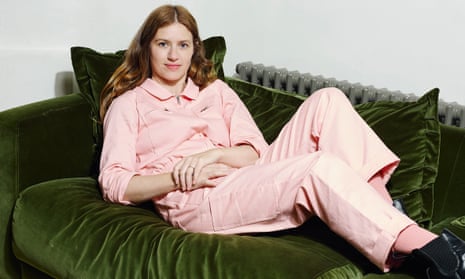 ‘When people began shopping for casualwear we sold all the extra stock on our website’: Louise Markey of LF Markey. Photograph: Suki Dhanda/The Observer
‘When people began shopping for casualwear we sold all the extra stock on our website’: Louise Markey of LF Markey. Photograph: Suki Dhanda/The Observer
Lilac joggers and first-colored appliquéed boiler fits by LF Markey have brightened up the times of most of the model’s prospects this 12 months, however designer and founder Louise Markey has been deep into color for a very long time. While doing an MA in vogue at Central Saint Martins, the mom-of-three created colourful items primarily based on historic costume, whereas she was sporting the classic workwear she had began amassing. “It took me a while to fuse what I was wearing every day with what I was designing for uni,” she says. “It met in the middle with LF Markey, this very geometric take on bright colours.”
Founded in 2013, the model offers a colourful dose of utility stylish to these bored of blue denim and khaki. “I think it might be just because I’m Australian. Colour is very acceptable to wear there,” says Louise, of her penchant for brights. “But this year colour has been shifting even better than usual.”
With so many wholesalers cancelling vogue orders this spring, Louise felt fortunate that she already had her online enterprise in form. “We had all this stock just sitting in the warehouse because the retailers didn’t want it,” she says. “It was scary. But actually when lockdown started people began shopping for casualwear and we sold all the extra stock on our website.”
When photoshoots had been unable to occur, the group discovered themselves with one other drawback – no pictures of their summer time assortment to placed on the web site or on Instagram. Louise credit her advertising supervisor with a stroke of genius there. “She said we should shoot the clothes on ourselves. So we did it in our houses and our back yards and on the street. I was in them, too, and I’d just given birth to my third child, so I got to do a plus-size shoot on myself.”
The pictures had been so effectively acquired that the model loved an on the spot uplift. “I think the numbers tripled,” says Louise. “It was dramatic. People seemed to like being introduced to the team and seeing the people behind the brand.”
Louise, who additionally owns one other, extra romantic model referred to as Meadows, filled with fairly attire, is now concentrating on the web site, the place gross sales are thrice the dimensions they had been at first of the 12 months. She has boosted her group by 25%, doubling the dimensions of the customer support group. “What I’ve learned this year is that you really need to be talking to your customers all the time.”
lfmarkey.com; @lfmarkey
‘I requested myself: “Is this real?”’
Yvonne Telford of Kemi Telford
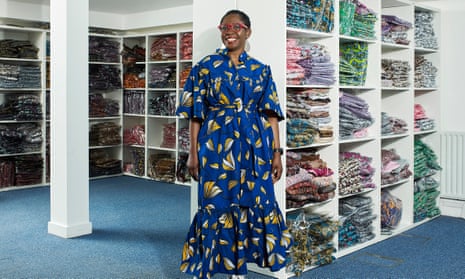 ‘In Nigeria, if you wear black, they think someone has died. I’ve at all times beloved color and print, however I couldn’t put on them right here as a result of it wasn’t seen as stylish’: Yvonne Telford of Kemi Telford. Photograph: Suki Dhanda/The Observer
‘In Nigeria, if you wear black, they think someone has died. I’ve at all times beloved color and print, however I couldn’t put on them right here as a result of it wasn’t seen as stylish’: Yvonne Telford of Kemi Telford. Photograph: Suki Dhanda/The Observer
When Yvonne Telford first moved to the UK from Nigeria in 1996, she put away her brightly colored clothes. “In Nigeria, if you wear black, they think someone has died,” she says with a snigger. “I’ve always loved colour and print, but I couldn’t wear them here because it wasn’t seen as chic.”
Yvonne, who had been working as a credit score threat analyst, started embracing color once more when she turned 40. “I thought, ‘It’s time for me to start living my life.’ Colour is like freedom for me. It makes me happy and it’s who I am.”
Yet it was to take a while earlier than that love of daring color grew to become the premise of her personal profitable clothes model, Kemi Telford. After quitting her company job and whereas elevating her two daughters, Yvonne began a weblog about motherhood. Two years later she invested £50 in tote baggage that she had printed with empowering slogans. Pouches, T-shirts and sweatshirts adopted. But one thing began to annoy her. “When I wore my T-shirts women would ask me about my skirts. Why weren’t they asking about the T-shirts? In the shower one day, it suddenly clicked: they like my skirts, they like my dresses, do something about it!”
What she did was to create a thriving clothes enterprise with a following of supportive ladies. Her vibrant printed skirts and attire in African wax cloth, are modelled on her web site and Instagram account by Yvonne herself, with photos taken by her household. “I’m not a fashion designer,” she says. “I’m someone who loves beautiful print and comfortable clothes, and has a story to tell. People are buying the clothes because of the stories we share.”
This was underlined in the course of the pandemic when her prospects started speaking extra about Kemi Telford. Her Instagram followers rose and gross sales soared. “We used to have a turnover of about £70,000, but it increased 100%. It got to a point where I was waking up in a panic and asking my husband, ‘Is this real?” A publish about how she couldn’t carry herself to cancel orders from her suppliers in locations like Nigeria and India additionally triggered a stir. “I said I didn’t want to take a meal off anybody’s table. I think that connected with customers because sales took off,” she says. “People care about where the clothes come from, but they care more about how you are treating the people making the clothes. I always say, when I get how I treat people right, I get the clothes right.”
kemitelford.com; @kemitelford
‘It’s gone off like a rocket’
Jo Hooper of NRBY
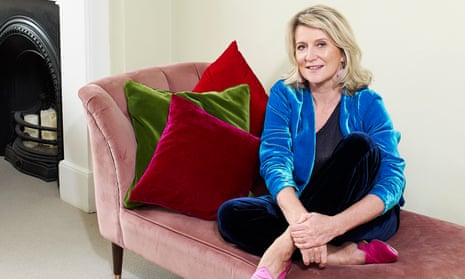 ‘The lovely jewel colours make you feel better when you put them on’: Jo Hooper of NRBY. Photograph: Suki Dhanda/The Observer
‘The lovely jewel colours make you feel better when you put them on’: Jo Hooper of NRBY. Photograph: Suki Dhanda/The Observer
“Our motto is: We’re here to cheer,” says Jo Hooper, founding father of NRBY. “We say it in the office all the time. What are we here for? We’re here to cheer.”
Less than two years in the past, Hooper, a former womenswear director at John Lewis and Debenhams, took her expertise within the retail business and her data of how she and different ladies had been working from dwelling, to start out NRBY, her personal model of colourful and cozy clothes to put on in the home – and close by. Inspired by the thought of Japanese one-mile put on, the form of merchandise she got here up with had been straightforward joggers, roomy boiler fits, linen and silk shirts and colourful, slouchy cashmere and alpaca knits. She didn’t realise it on the time, however her idea put her within the splendid place to climate a international pandemic through which individuals had been confined to the house.
“When the first lockdown happened we didn’t have any ambitions other than to still be around when it was all over,” she says. “But our turnover quadrupled. It was the combination of being able to tell our story via things like Instagram and having the right kind of product.” Five hundred pairs of their Cameron jersey dungarees with adjustable straps offered in two days. “One customer wrote and said I bought a pair but my daughter’s stolen them so I’m ordering another pair,” she says. “That’s the kind of story we love.”
As winter has taken maintain, it has been the velvet shirts, blazers and boiler fits in saturated shades of blues, pinks and purple that, as Jo places it, “have gone off like a rocket”.
“We were concerned that if no one was going anywhere they wouldn’t be sure about velvet, but that idea of sitting on your sofa wearing something nice and being comfortable has been popular,” she says. “The lovely jewel colours just make you feel better when you put them on.”
She’s effectively conscious of the facility of color in vogue. “When I was at John Lewis I used to say you’ve got seven seconds to grab someone’s attention as they walk past your range,” she says. “But on Instagram you’ve got less than 0.3 seconds or something! How do you stop someone in their tracks? I think that’s why colour has become so important over the last five years. People keep talking about cream and camel and neutrals, but it’s colour that stops you in your tracks.”
nrbyclothing.com; @nrbyclothing

